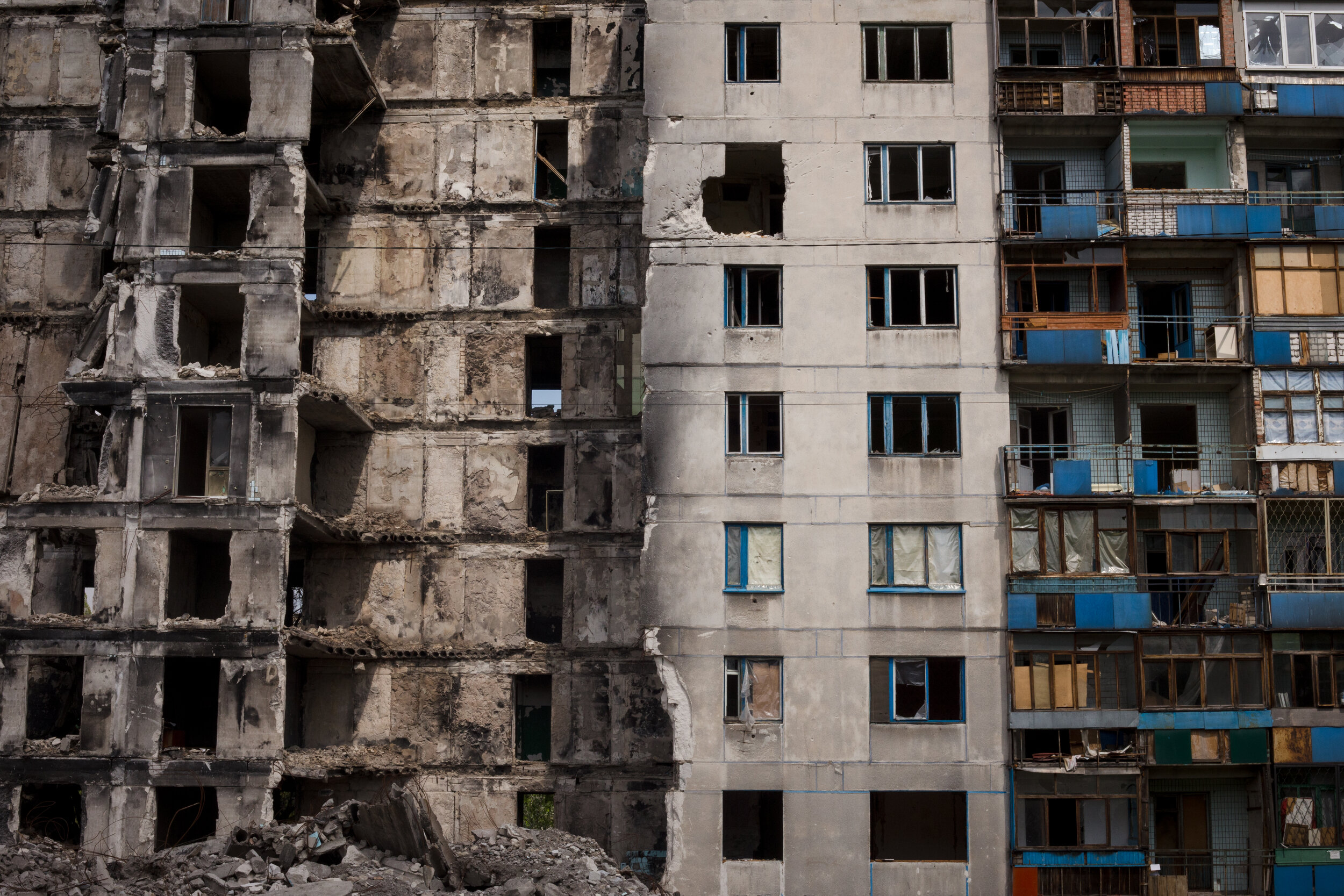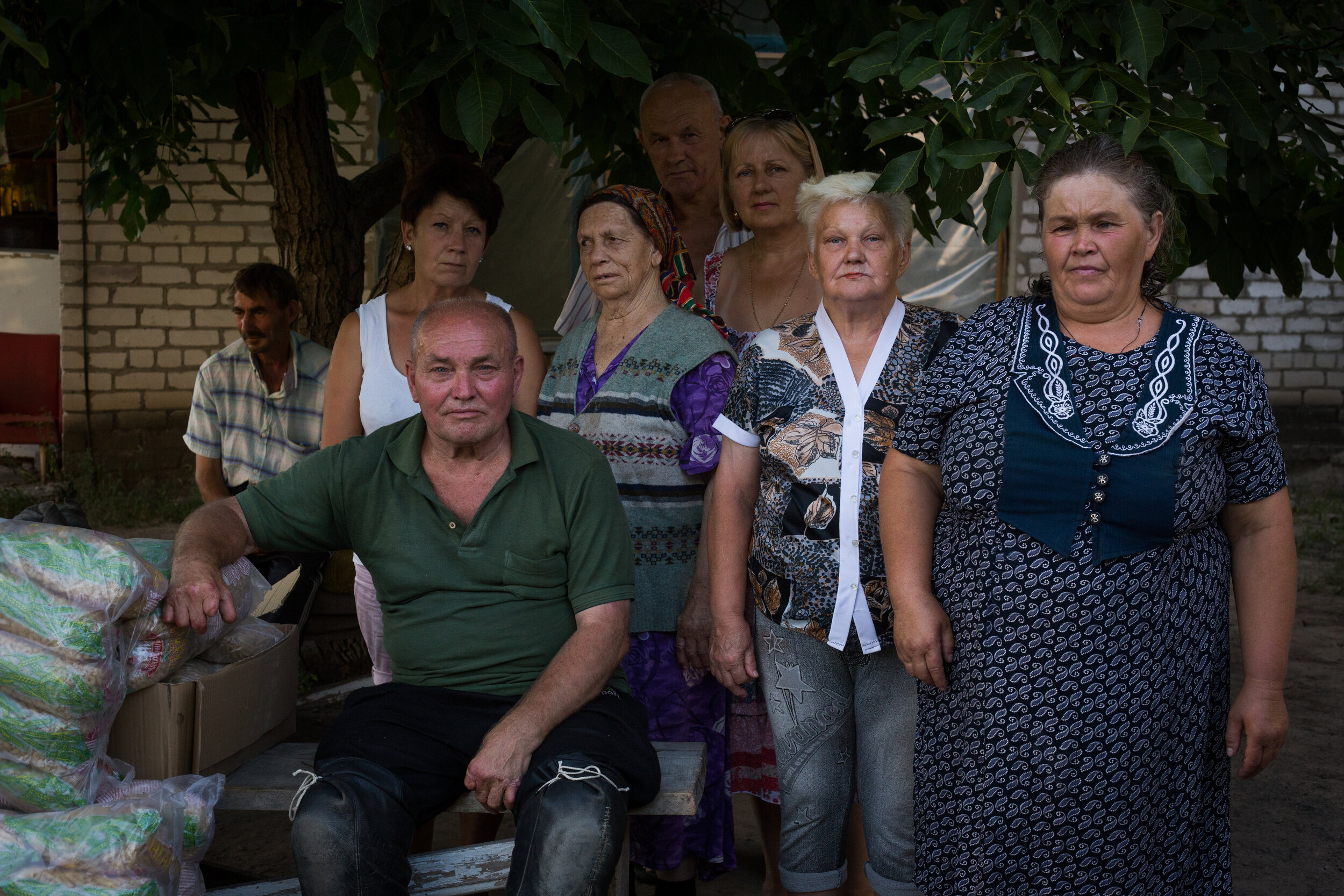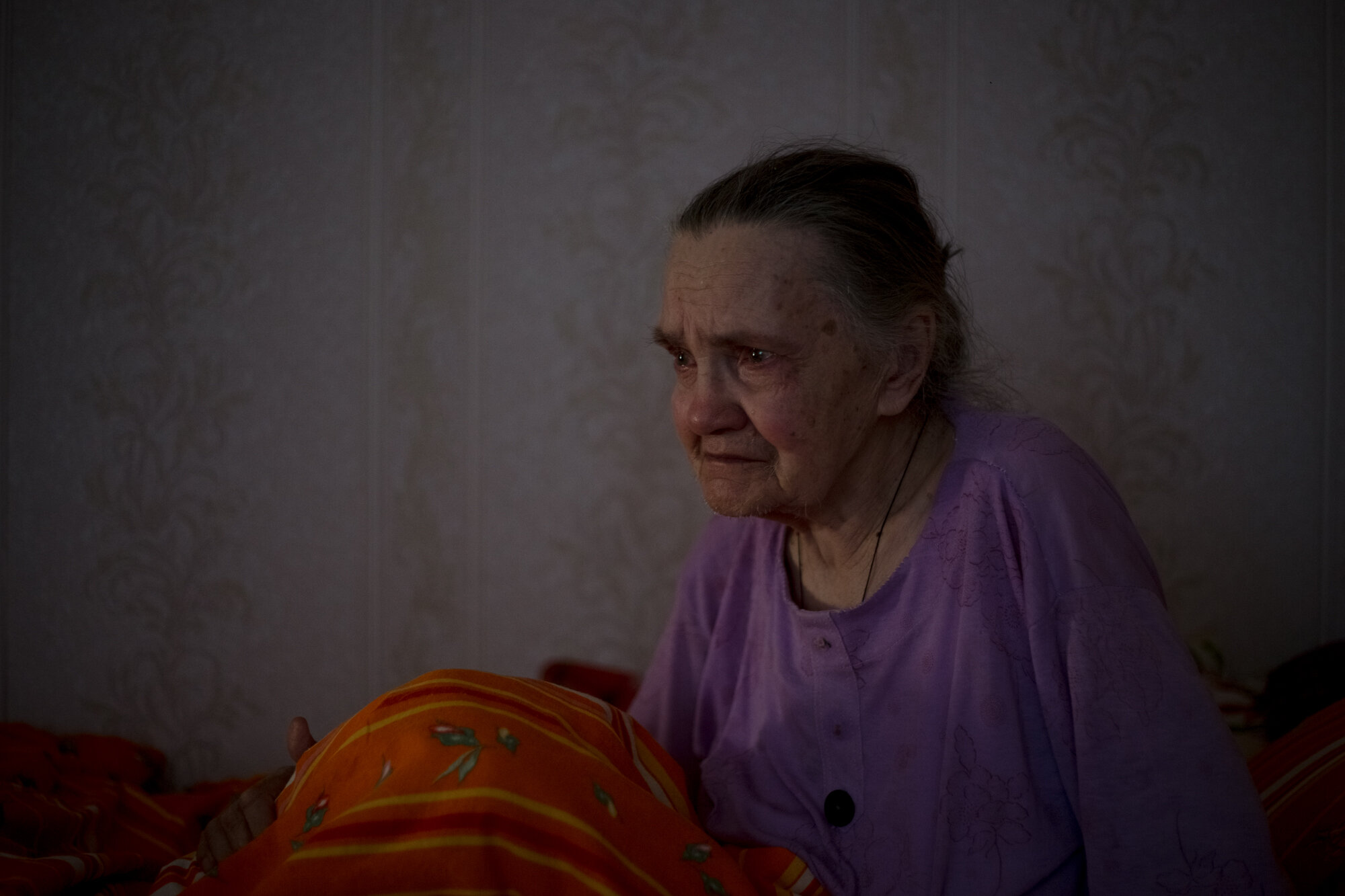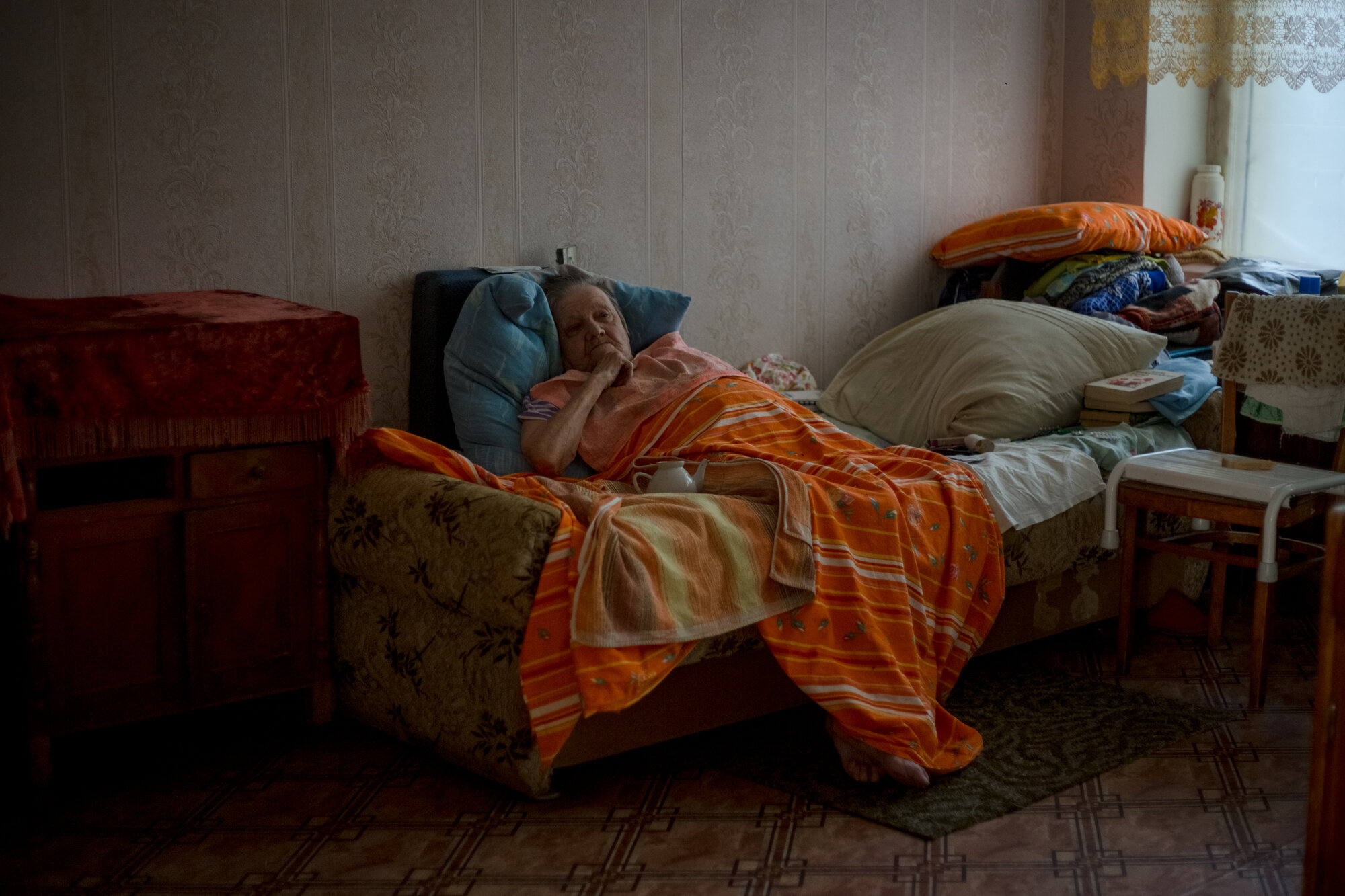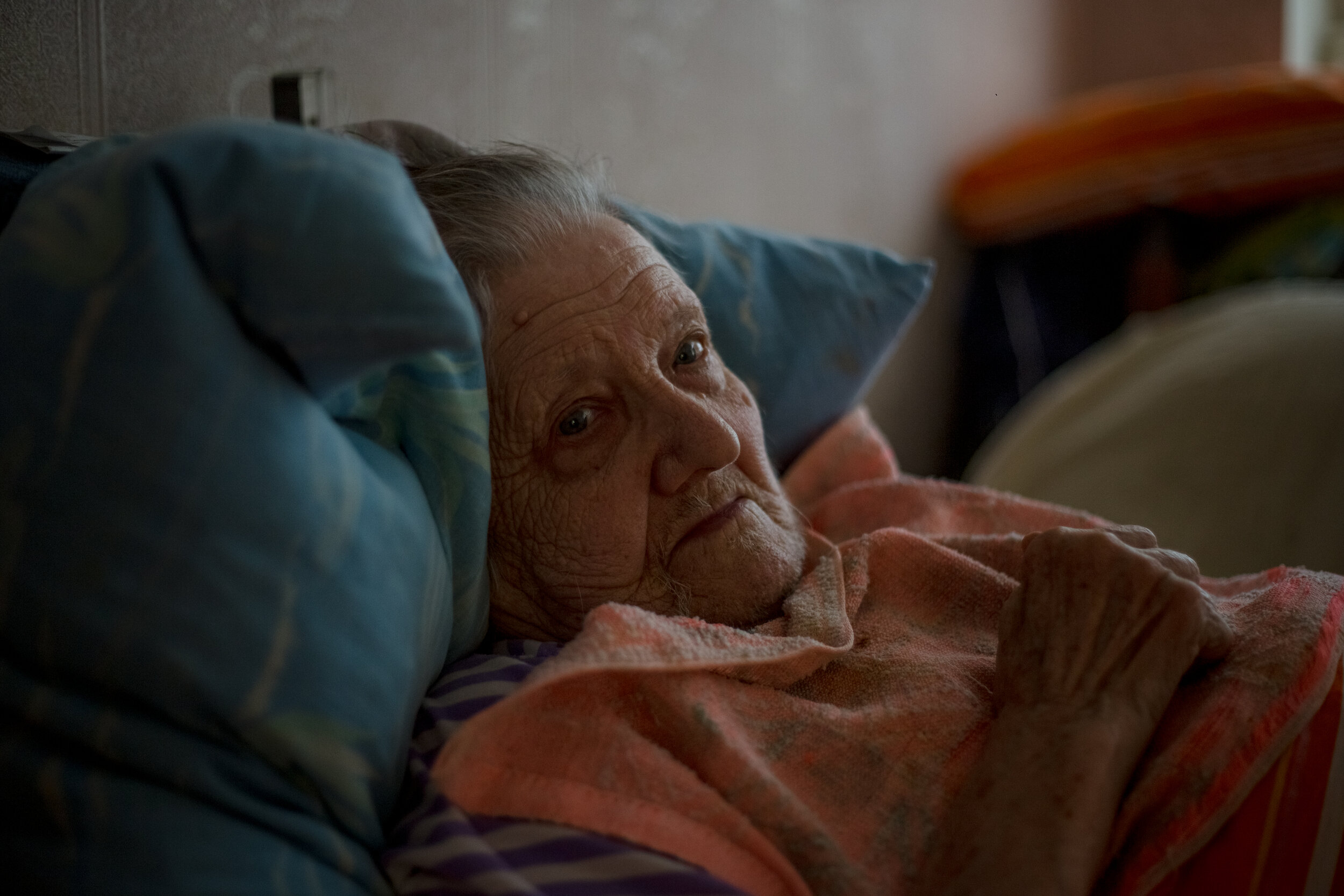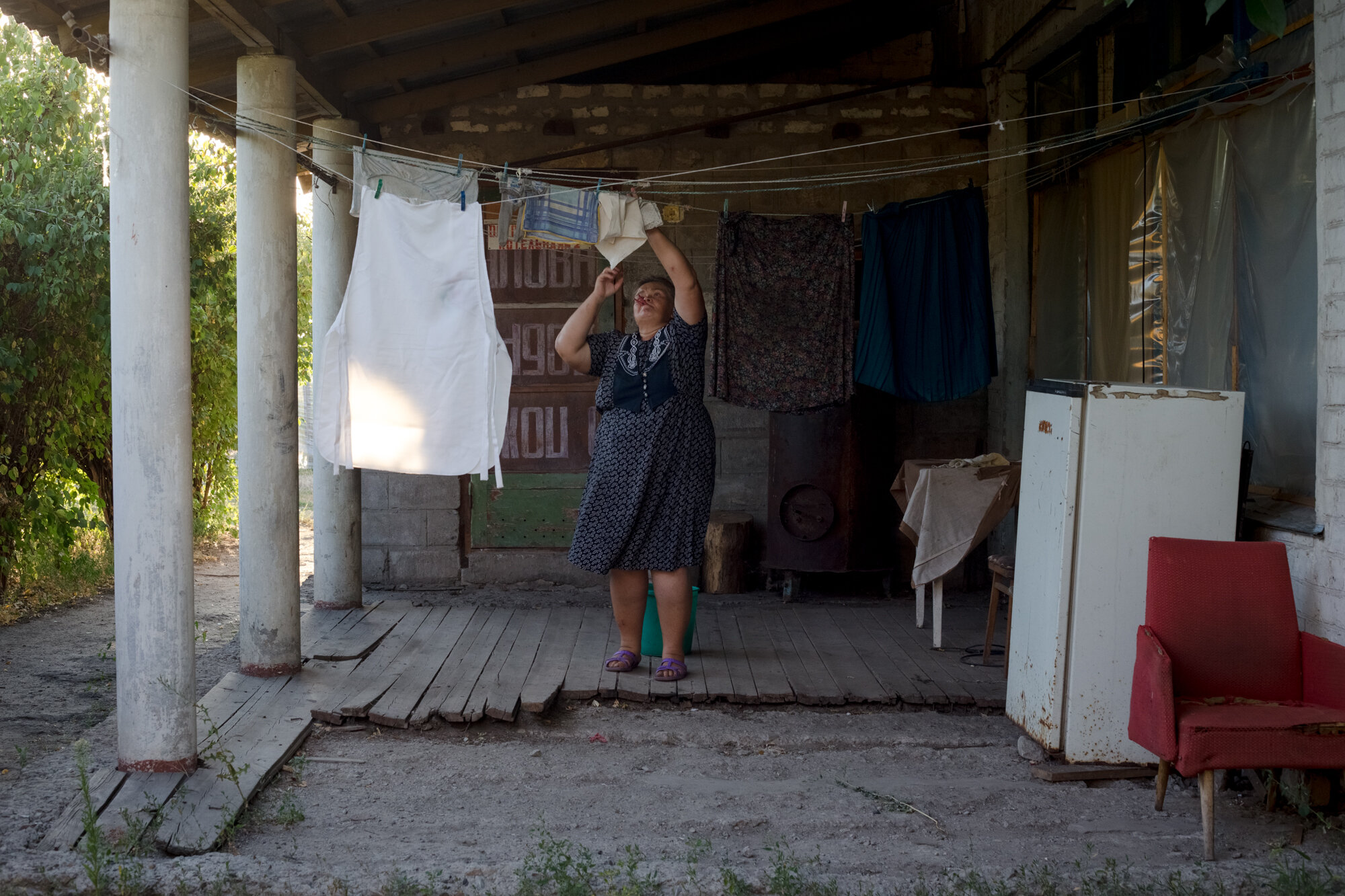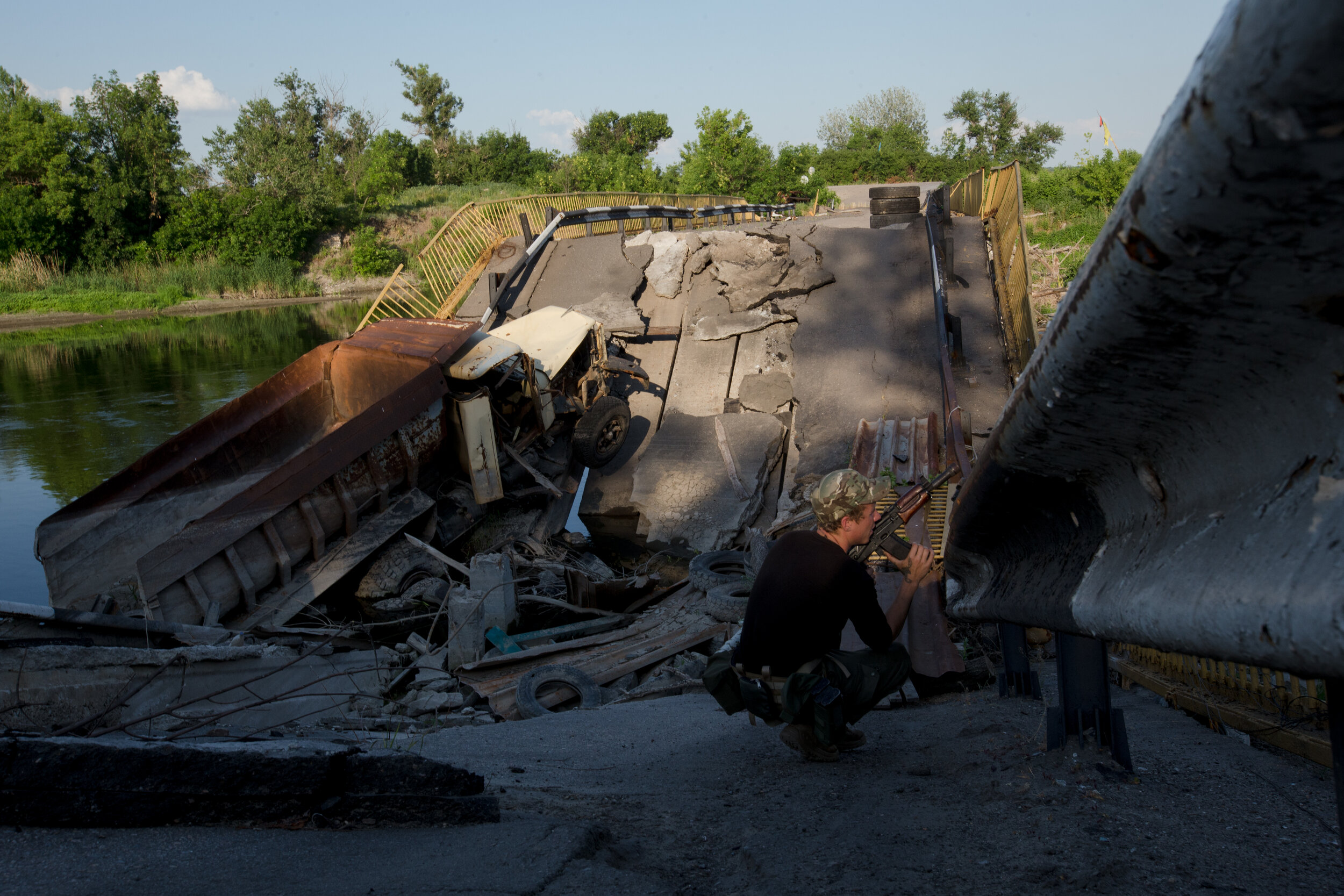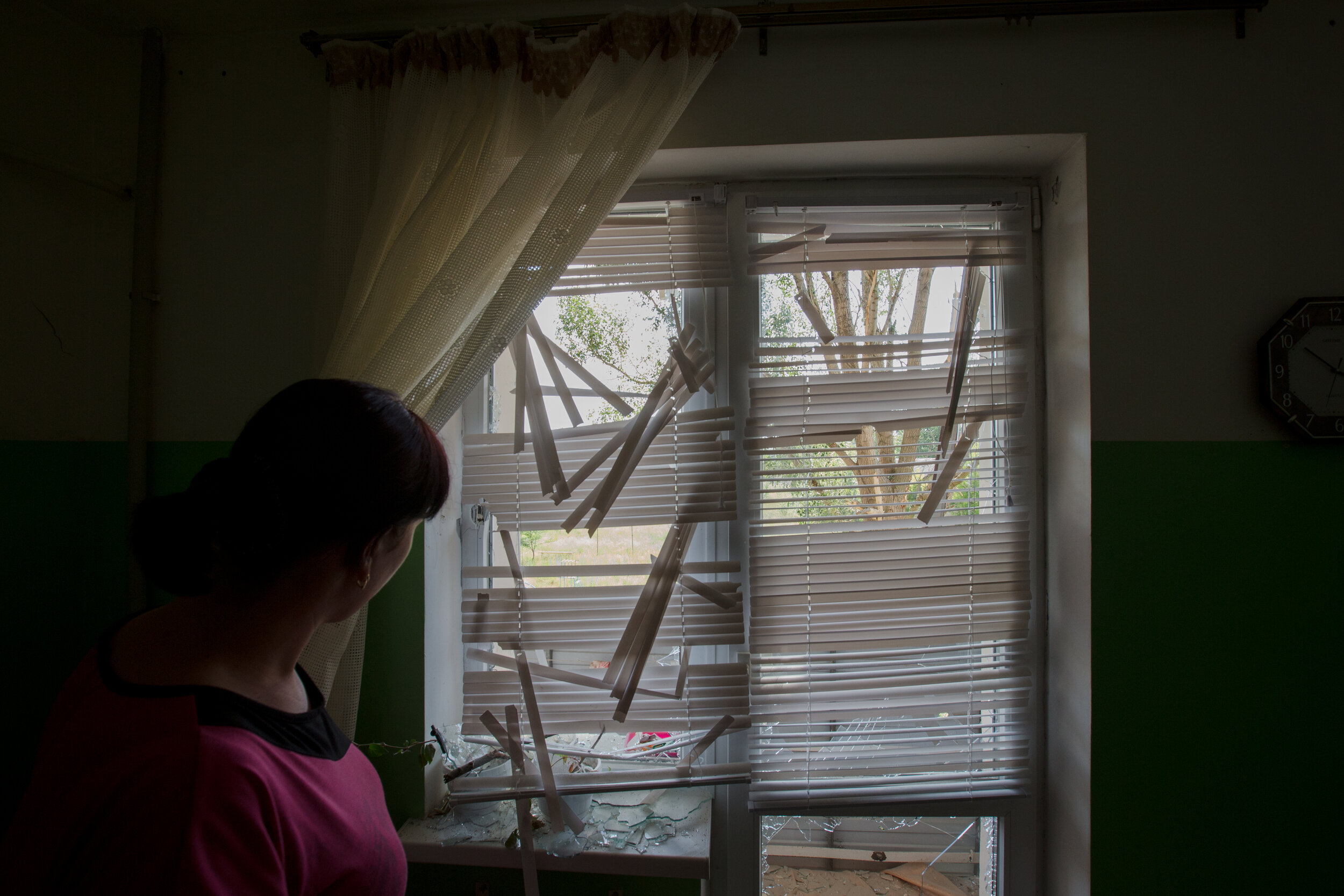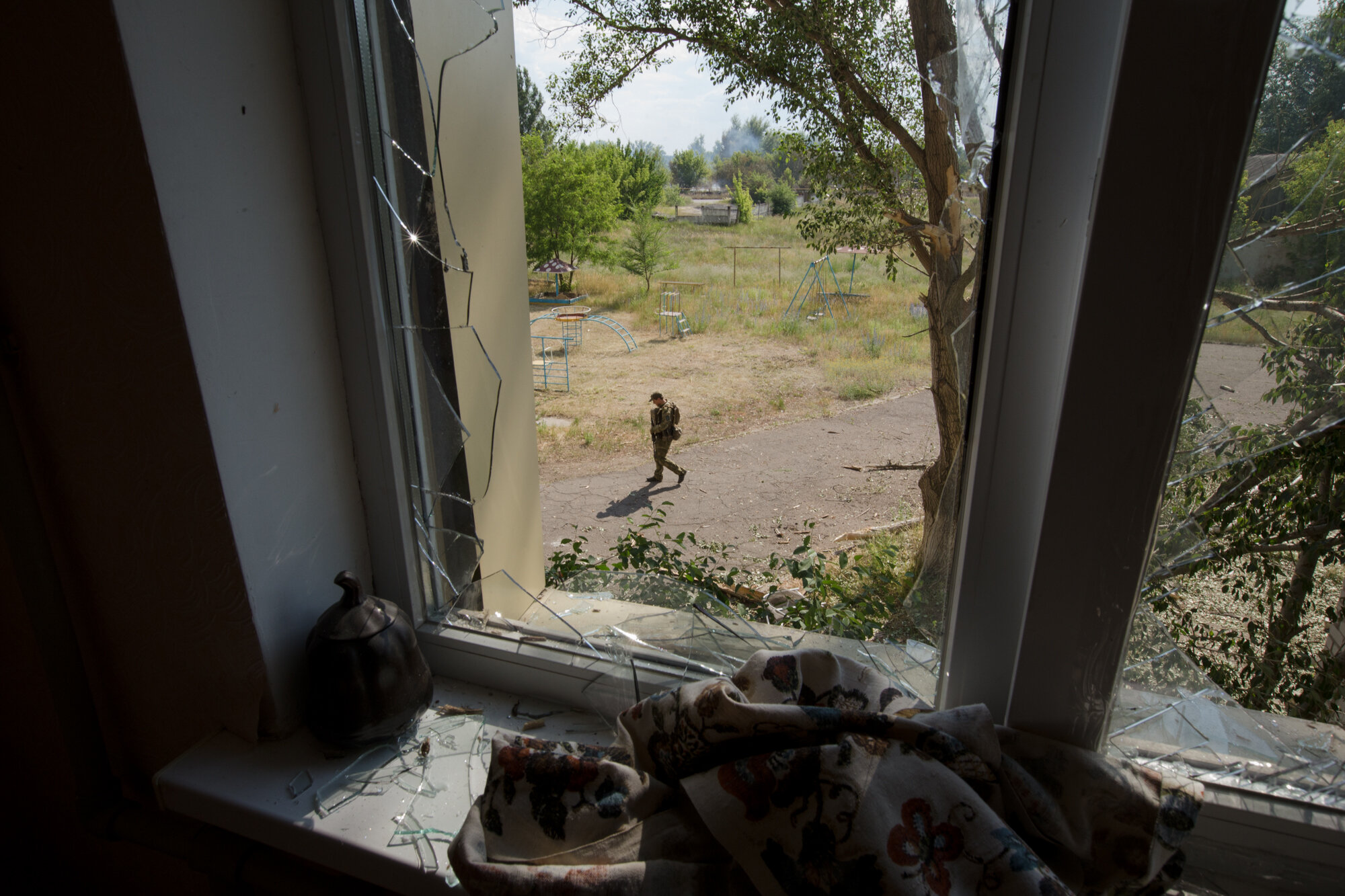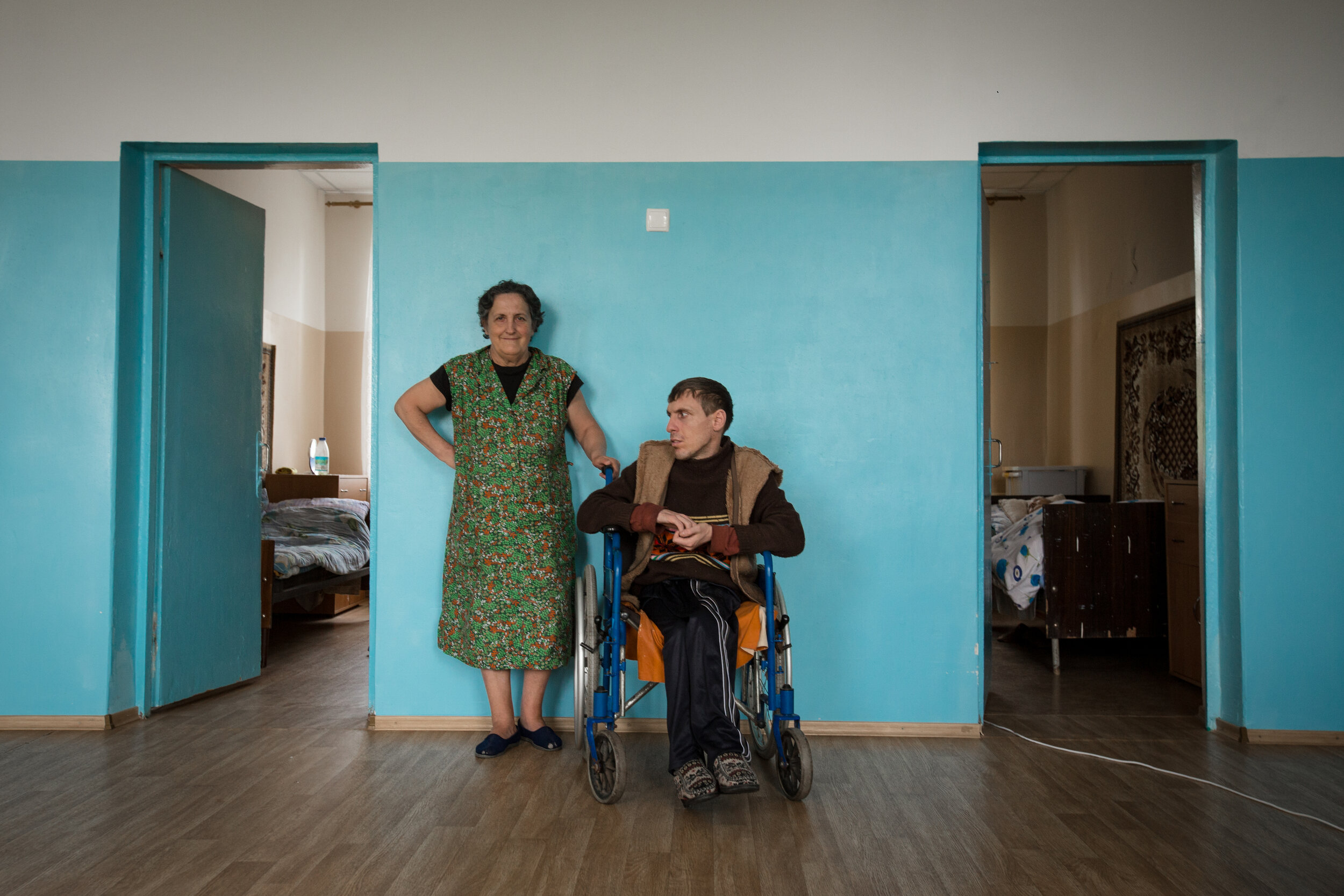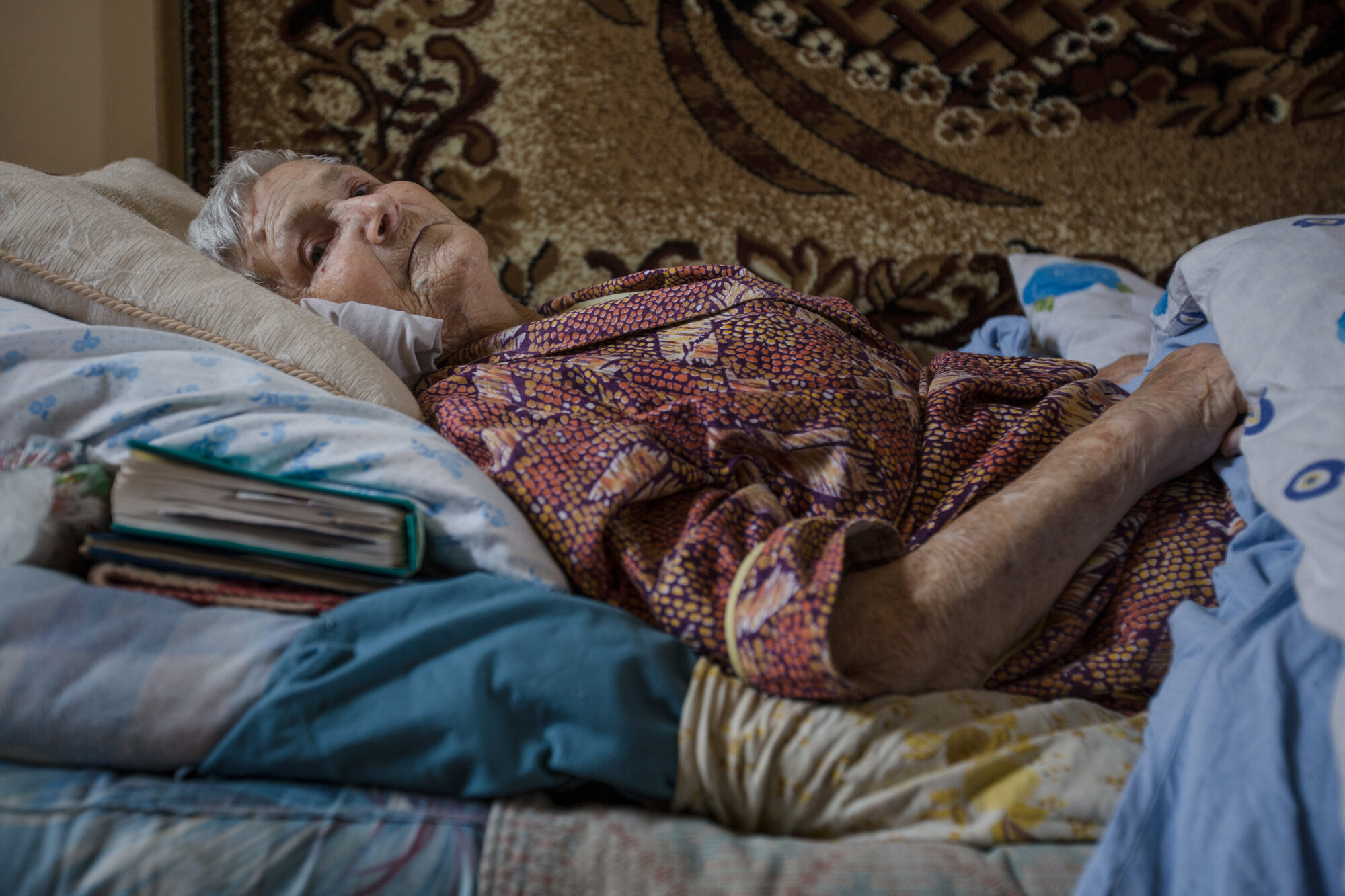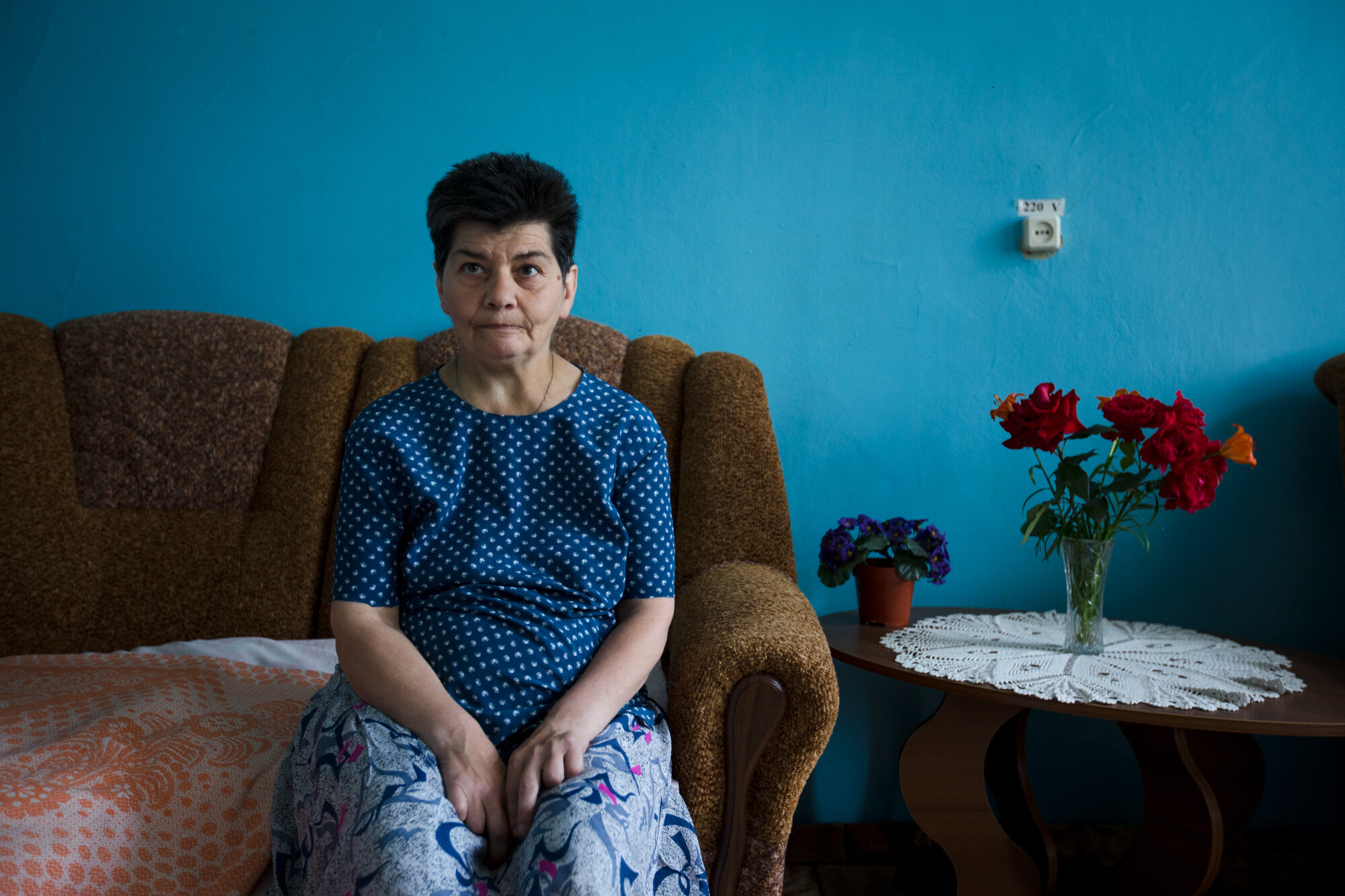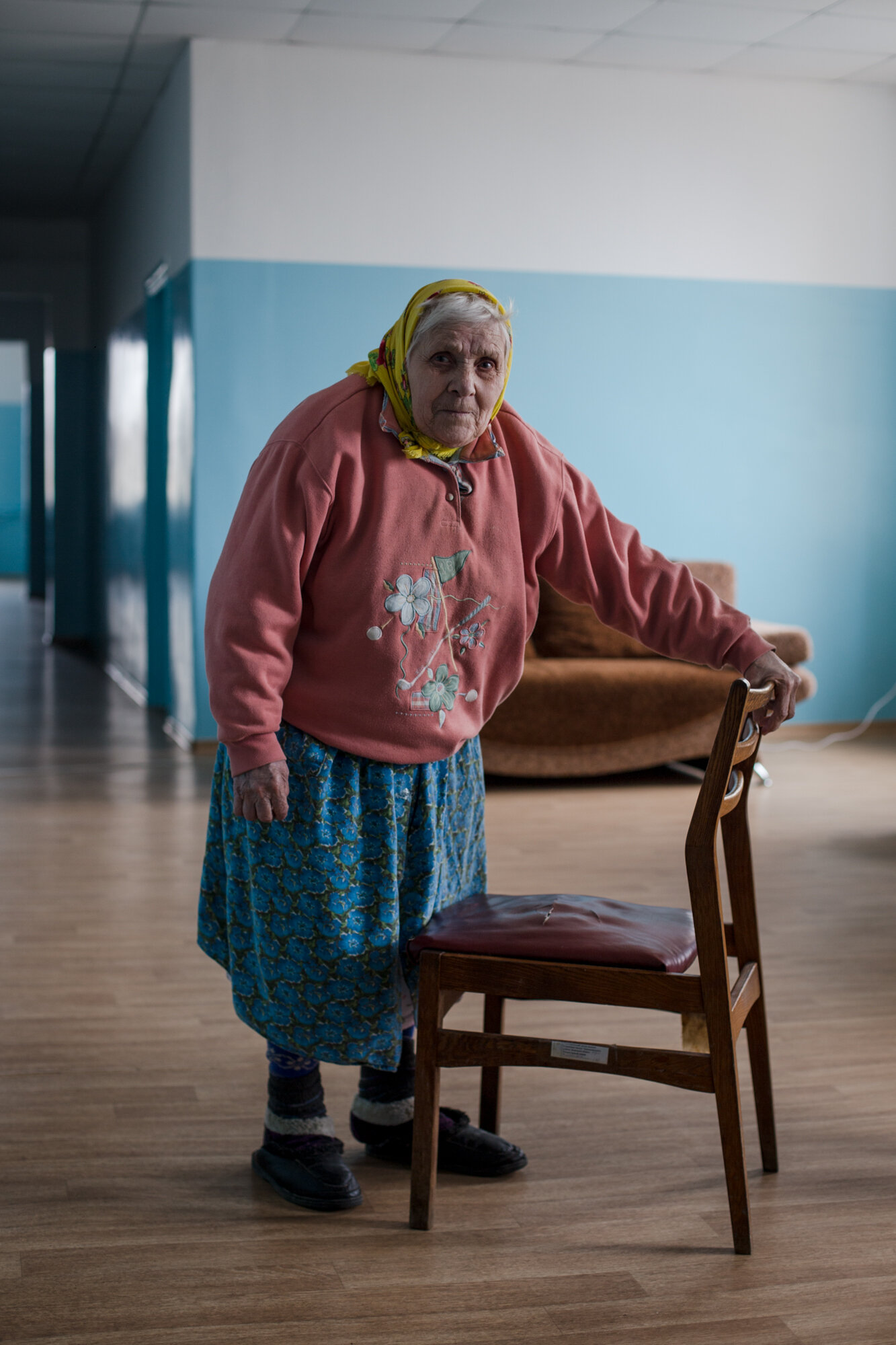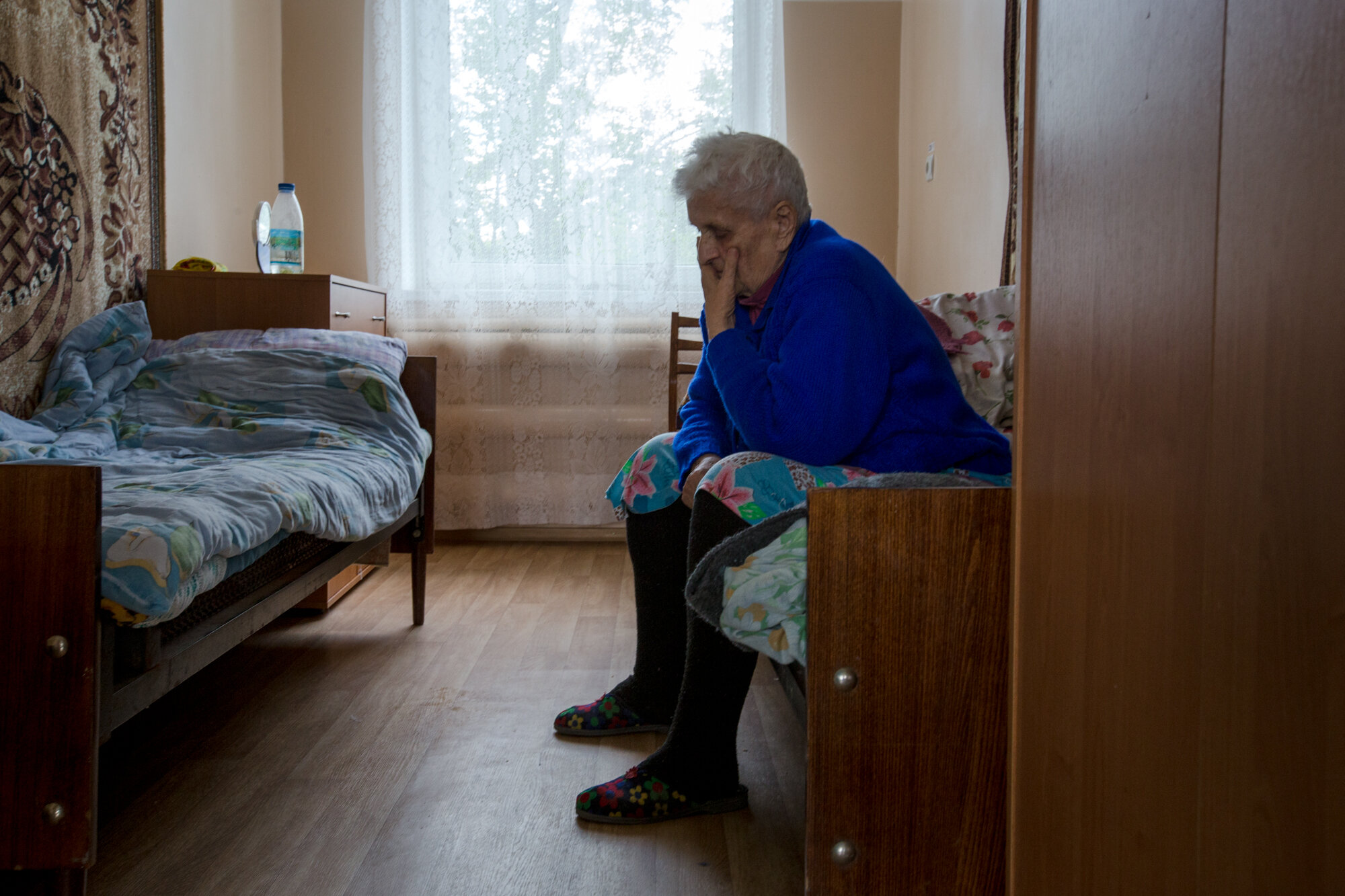Any war is the life between battles. The interaction between militaries and civilians. The rules of this interaction, which they themselves establish with each other. People for years live in such a reality and getting used to it.
The war in Ukraine began in March 2014 after the military invasion of the Russian Federation into the territory of the Crimean peninsula and the subsequent annexation of it. And the military response to the Russian hybrid aggression on the territory of Donetsk and Luhansk regions.
Along the frontline lays a strip of the so-called “grey zone” - no-mans-land, where people suffer from a legal, humanitarian and informational vacuum due to the absence of any authority and institutions. At the moment many of them are left without housing, work and conditions for living. In many villages, they have no electricity, no gas, no food to secure their existence. They rely on the military for medical service. Time to time, artillery shelling and combats force them to live in basements. This is an extremely unfortunate situation for all those who could not flee - be it due to age, health, a disabled relative - or any other reason.
In the first two years of the war, there was no enough help by international humanitarian organizations. Many people survived only thanks to each other’s help. Here, more than anywhere else, mutual support and sympathy is the power of people.
Pictures were made between summer 2014 and autumn 2018, when I followed the group of humanitarian volunteers from Kyiv.
A destroyed 16-floor building. Nothing new in this familiar ruins and figures nearby. What is new is the war and its victims. Lysychansk. Luhansk region. Ukraine. 2015
Local volunteers in Stanitsa Luhanska gathered around 70 troubled elderly people under one roof in an abandoned school. Most of them are pro-Russian. Actually, modern Russia associates with the Soviet Union for them. They’re sympathetic to it mostly because they were young back then. Such people, still feeling themselves citizens of USSR, remain the main target group for the Kremlin’s manipulations and propaganda in Eastern Europe.
It makes no sense to explain to them that it is not their youth that modern Russia has inherited from the Soviet Union, but the political regime which they feared. Moreover, such emotional argues would be dangerous for them because of their weak health. Stanitsa Luhanska. Luhansk Region. Ukraine. 2015.
Nina was paralyzed after two strokes. It happened 2 years before the war started. Everything she knows about the war in Donbas is only what she could hear. Stanitsa Luhanska. Luhansk region. Ukraine. 2015
The revelation. A woman is crying while telling that many Cossacks, who went to fight against the Ukrainian state changed their mind, but don’t know what to do now. They can’t just come back. Some of them have left pro-Russian military formations and now wait for a chance to come back to their homes at the territory controlled by Ukrainian army. Tryohizbenka. Luhansk region. Ukraine. 2015
“Thanks to God There Was No One at Home”. Two hours after an explosion of a “Grad” missile near a building in Trehizbenka. No one of civilians and combatants were injured. Tryohizbenka. Luhansk region. Ukraine. 2015
Together with her 9 y.o. in autumn 2014 Tatyana was going to a hospital to make injections. She had just given birth to a second child. On their way, they got under artillery shelling. When she got back into consciousness, she saw her child laying on a fence, and her own left leg - laying apart of her body. Later, in a letter from her husband that she read in the hospital, she has got to know that her elder daughter had died. Two more civilians were killed in that shelling. Tryohizbenka. Luhansk region. Ukraine. 2015
Katya lives in the village of Kalaus, together with her mother and little sister. Her grandfather joined the Ukrainian volunteer battalion “Aidar”. Right after they moved from occupied Torez. Kalaus. Luhansk region. Ukraine. 2015
An elderly lady stands inside her house, earlier partly destroyed by a shell. The yellow tomatoes she holds had been grown of seeds that humanitarian volunteers brought her in spring. Tryohizbenka. Luhansk region. Ukraine. 2015
Anna Pavlovna’s playing room, bedroom and shelter. Anna Pavlovna was 5 years old when her family moved to a country house from Donetsk after it had been occupied by Russian forces in 2014. Today they are still sleeping in the basement due to the village where their house is located being shelled daily. Tonen’ke. Donetsk region. Ukraine. 2015
Mother and her daughter are going to receive humanitarian support packages that Ukrainian volunteers delivered to the town of Krymske. A destroyed school can be seen in the background. Two hours later the town would be shelled by MLRS “Grad”. Krymske. Luhansk region. Ukraine. 2015
Mother Ludmila and her son. Both have a congenital cerebral palsy. Their house in the town of Granitne was destroyed in the very first shelling. Now the town is almost destroyed and there are still battles going on. Now they live in a shelter for the elderly and people with disabilities in the town of Myrne (translates in English as “Peaceful”).
Because of the war, the nursing house of Myrne has been officially closed, but the staff has not gone home and continues to perform their duties. They work for free, despite having their own families and problems. What they are doing is a great heroism. Myrne. Donetsk region. Ukraine. 2015
They saw the WWII in the same village and that war’s reason was clearer for them. Now they can’t understand why some Ukrainians decided to call themselves Russians and shoot other Ukrainians. They don’t understand what Russian soldiers are doing there and why they claim “Donbas is Russia”. “‘I’m Ukrainian, living in Ukraine, this land is soaked in with Ukrainian blood for centuries, are they all lost their mind?”, - 86-year-old Mariya tells in clear Ukrainian. Novognativka. Donetsk region. Ukraine. 2016.
Anna lives with her husband in a basement of a neighbouring house, because of “the fear of shelling”. Their house is one of few that remained untouched in the entire street, all the rest had been destroyed in August-September 2017 by incendiary bombs fired from occupied territories. Zaitseve is currently separated between the Ukrainian Armed Forces and the Russian forces. “If you’d ask me about the ceasefire, I would tell: I hope someday it comes... The war is still ongoing”. Zaytseve. Donetsk region. Ukraine. 2018
A boy in the place he lives with his elder brother and parents. Maryinka. Donetsk region. Ukraine. 2015
A woman’s book. The house in which the woman lives is covered with fragments of shells. But her greatest tragedy is the culinary book, which her family preserved for generations from the middle of the XIX century, and which the Russian forces have burnt to light the furnace. Krymske. Luhansk region. Ukraine. 2015
A woman in the night shelter. Inhabitants of Stanitsa Luhanska, come here every night to sleep safely during the artillery shelling. Stanitsa Luhanska. Luhansk region. Ukraine. 2015
A woman with a disability (lost one leg) lives in a basement with the rest of her neighbours. Whenever shelling stops, they take her out to the front door so she can see the sunlight. The town is located just 2 kilometres from Donetsk airport. Before the war, around 750 people inhabited Opytne. Now - only 50. The woman died in 2016. Opytne. Donetsk region. Ukraine. 2015
A glow of electric light over the occupied Donetsk, which comes from the Ukrainian territory. Donetsk. Ukraine. 2016
A new playground was built just a few weeks before the war came to the village. Zhovanka. Donetsk region. Ukraine. 2018
The village of Vodyane near Donetsk. Neither electricity nor food is available. People line for support brought by volunteers from Kyiv. Vodyane. Donetsk region. Ukraine. 2015
Women from Stanytsia Luhanska are happy to see a big teddy bear, which volunteers had brought for children. Stanytsia Luhanska, Donetsk region, 2015.
A girl lives with her mother and HIV-positive grandmother in the last house of the street. All the rest were destroyed in shelling. Pervomaiske, Donetsk region, Ukraine, 2015.
